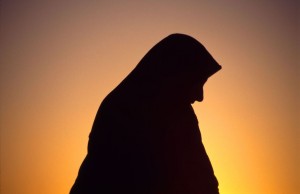Whose Rules? Balancing Safety and Religious Freedom in an Increasingly Global Society
Last summer, a Muslim woman in Dearborn Heights, Michigan, Malak Kazan, was pulled over for a traffic offense and arrested for driving with a suspended license. She was forced to remove her hijab for the booking photo and has now filed a lawsuit against the city of Dearborn Heights and its police department for violating her right to exercise her religious freedom.
According to the lawsuit, “wearing a headscarf is a reminder of [Kazan’s] faith, the importance of modesty in her religion, and her religious obligations, as well as a symbol of her own control over who may see the more intimate parts of her body.” Kazan also claims that she experienced “extreme shame, humiliation, mental anguish, and emotional distress” when forced to remove her hijab (which covers the head and chest).
Dearborn Heights Police Chief Lee Gavin, named in the lawsuit, has said that the department requires people to remove hats and other head coverings when being booked, as they may “contain concealable items that could pose a threat or chance of injury to the cops or to themselves.” Speaking to Fox 2 News in Detroit, Gavin said the typical procedure is to have women remove hijabs in the presence of a female officer (a request Kazan says she made but was denied), however he notes there aren’t always enough female officers at the station.
A similar incident concerning the issue of religious freedom vs. safety/security occurred a few months ago at a public school in Auburn, Washington, when a student requested to bring a sacred dagger, known as a kirpan, to school because it is integral to the Sikh faith. Apparently, by ancient commandment the kirpan is one of five articles of faith Sikhs are supposed to wear at all times. An exception for the student had been made to the “zero tolerance” weapon policy. The student was allowed to bring the object concealed under clothing, causing discomfort among others.
These incidents raise some significant questions: Where should we draw the line between religious freedom and security? How should they be balanced? What compromises are we willing to make?
During the National Prayer Breakfast just last week, President Obama offered a significant reminder: “Our government does not sponsor a religion, nor does it pressure anyone to practice a particular faith, or any faith at all. And the result is a culture where people of all backgrounds and beliefs can freely and proudly worship, without fear, or coercion….the freedom of religion is a value we will continue to protect here at home and stand up for around the world, and is one that we guard vigilantly here in the United States.”
U.S. Constitutional law has always ensured that individual rights to religious freedom are protected. Unfortunately, there are cases when minority religions conflict with the mainstream values and concerns of the general public or public policy. Public safety should always be a priority, and differing values should only be respected when they do not pose any harm or threat. It is always ideal if public safety, comfort, and individual/minority religious rights are all fulfilled, or at least maximized. The cases mentioned here show that it is important to weigh the relative importance of each.
In the Dearborn Heights case, is it more important to enforce a policy for the primary concern of safety or more important for a Muslim woman to hold onto her religious dignity and identity? The woman has not victimized anyone and seemed to be the victim herself, as she suffered negative psychological effects. Female officers should have been available to photograph the woman. Could the police have waited for the arrival of an available female officer? If they couldn’t and needed to enforce security by making the woman remove her hijab, perhaps they could have offered to pay for one of her sessions with a psychology professional. Policy should not be set in stone, but instead should take special circumstances into consideration and allow for flexible procedure and accommodation. In the Auburn case, the practice of wearing the kirpan concealed under clothing at all times had been determined to be harmless and essentially religious, although it made others feel uncomfortable. It may take time for those individuals to develop trust in the Sikh practice. The key is to determine how essential a religious practice is to the identity and dignity of an individual or community and the potential harm caused to others or the individual whose religious freedom has been violated.
Ever since the 9/11 attacks, Islam and terrorism have become a sensitive topic and the Muslim community has received special scrutiny. The recent Charlie Hebdo attack in France has raised the issue of Islamic and religious extremism anew. National security measures have tightened in the United States and in France and the issue of religious freedom has become a tricky one.
Besides the issue of security, the matter of national identity and cohesion is also significant. In this era of globalization and development, there has been an influx of immigrants to the West to benefit from the region’s economic advancement and democratic political system. Along with this increase, acceptance and tolerance of diverse beliefs and values is more important than ever. France has taken an assimilation model to enforce its national culture. It has implemented such laws as banning the hijab for women in school and public service and banning the niqab and other face-covering headgear in public. France’s assimilation approach may help with stronger national cohesion and make the general public comfortable, but it limits the rights of religious minorities. The United States is slightly better than European countries when it comes to diversity because of its history of religious freedom and immigration. Seeking the balance between individual/minority rights to hold and practice religious and cultural beliefs and the safety and well-being of the general public is key to peace in an increasingly globalized and pluralistic world.

